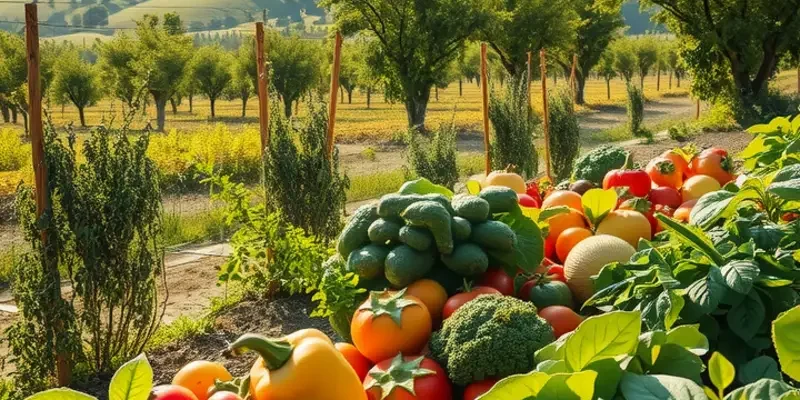Understanding how to swap fresh and dried herbs can open up a world of flavor and versatility in your cooking. Fresh herbs bring brilliance and vibrancy, while dried herbs offer convenience and longevity. Both have unique strengths, and knowing when and how to substitute one for the other can help elevate your dishes while catering to your dietary needs. This guide provides practical tips for making these substitutions seamless, ensuring your culinary creations are always delicious.
Understanding Flavor Profiles: Fresh vs. Dried Herbs

The use of herbs in cooking is both an art and a science, transforming dishes into complex symphonies of flavor. Central to this transformation is understanding the distinct characteristics of fresh versus dried herbs.
Flavor Profile
Fresh herbs are renowned for their vibrant, fragrant qualities. They offer a floral, crisp, and sometimes earthy note to dishes, creating a flavor that dances on the palate. On the other hand, drying herbs concentrates their oils and flavors, resulting in a more robust and pungent profile. This amplification makes dried herbs excellent for dishes requiring long cooking times, where their intensified flavors can meld seamlessly into the food.
Let’s consider basil. Fresh basil, with its anise-like aroma, can lift a tomato-based salad with a sweet, aromatic punch. However, dried basil, with its concentrated flavor, becomes a steadfast companion in robust pasta sauces, offering depth that withstands prolonged heat.
Potency and Measurement
The potency of herbs dramatically shifts from fresh to dried. Typically, one teaspoon of dried herbs equates to about one tablespoon of fresh. This conversion is crucial when swapping types, ensuring dishes are neither overwhelmed nor under-seasoned. This potency is due to the concentration of essential oils during the drying process, which alters the strength of flavor.
Consider thyme, a common herb in both fresh and dried forms. Fresh thyme is subtly minty and can seamlessly garnish a roast. In contrast, dried thyme is assertive, perfect for a hearty stew, where long cooking allows its flavors to integrate deeply.
Optimal Uses
Selecting between fresh and dried herbs depends largely on the dish and cooking technique. Fresh herbs are best used in dishes with minimal cooking times, such as salads, pestos, or as finishing touches. Their delicate nature and brightness can be lost if subjected to heat for too long.
Dried herbs are ideal for braises, marinades, soups, and stews. Their intense flavor can withstand long cooking times, enriching broths and sauces. However, they should be added early in the cooking process to allow their flavors to fully develop.
Take parsley, for example. Fresh parsley adds a burst of brightness as a garnish, while dried parsley works well in broth-based dishes where long simmering unlocks its essence.
Choosing the right herb form can enhance the cozy, comforting nature of dishes. For more tips on substituting flavor enhancers in your cooking, visit our flavor boosters guide.
Understanding when to use fresh versus dried herbs is pivotal for achieving flavor harmony. By selecting the right form, home cooks can craft delightful dishes that resonate with an aromatic complexity, warming the soul and satisfying the senses.
Practical Substitutions: How to Swap Herbs in Your Kitchen

In the pursuit of culinary perfection, understanding the art of herb substitution can elevate your cooking. Navigating between fresh and dried herbs need not be daunting once you master the appropriate ratios and techniques.
Ratios for Substitution
The most common rule of thumb is to use 1 teaspoon of dried herbs for every 1 tablespoon of fresh herbs. This 1:3 ratio accounts for the intensified flavors in dried herbs due to the concentration process they undergo. However, it’s worth noting that this can vary depending on the herb itself. For instance, the potency of rosemary means you might only need a 1:2 ratio. Always adjust to taste.
Conversely, when a recipe calls for dried herbs and you only have fresh, you can simply reverse the ratio, using 3 times the amount of fresh herbs to achieve the right balance of flavors.
Culinary Techniques
Timing is key for taste. Fresh herbs are best added towards the end of the cooking process to preserve their flavor and gentle aroma. Think of them as the finishing touch that brightens a dish. On the other hand, dried herbs need a bit more time to release their flavors fully. Allow them to simmer into your dishes, usually added at the beginning or during the cooking process.
For robust herbs like thyme, oregano, or sage, starting early in the cooking process can meld their flavors into a dish seamlessly, while delicate herbs like basil, parsley, and cilantro should be reserved for the end to maintain freshness.
Storing and Extending Shelf Life
Proper storage can significantly extend the shelf life and potency of your herbs. Fresh herbs thrive when stored in the refrigerator, wrapped in damp paper towels or with their stems submerged in water. Consider freezing excess herbs in oil to maintain their vibrancy for later use.
Dried herbs have a longer lifespan if stored in airtight containers away from heat and sunlight. While they don’t spoil, their potency will fade over time, usually within a year for maximum flavor.
For eco-friendly storage tips in the kitchen, visit this resource to ensure you are maximizing your herb shelf life efficiently.
Creative Uses in the Kitchen
Embrace creativity by mixing fresh and dried herbs within the same dish. This layering can enhance complexity, providing fullness of flavor. A hint of dried thyme can enrich a soup, while a sprinkle of fresh parsley at the end offers a burst of freshness.
Think beyond the traditional uses—create herb-infused oils, dressings, or even drinks. By mastering these techniques, you empower yourself to explore new culinary landscapes and elevate simple dishes to delightful creations.
Final words
Mastering the art of swapping fresh and dried herbs enriches your culinary journey, allowing you to experiment with flavors and enhance your dishes without feeling limited. With the guidance provided, you can confidently make these substitutions, ensuring that every meal is infused with the right amount of herbal goodness. Empower yourself to adapt recipes based on what you have on hand,** making cooking a more joyful and flexible experience. Keep exploring and tasting, for every herb has a story that can transform your dishes from simple to sublime!







